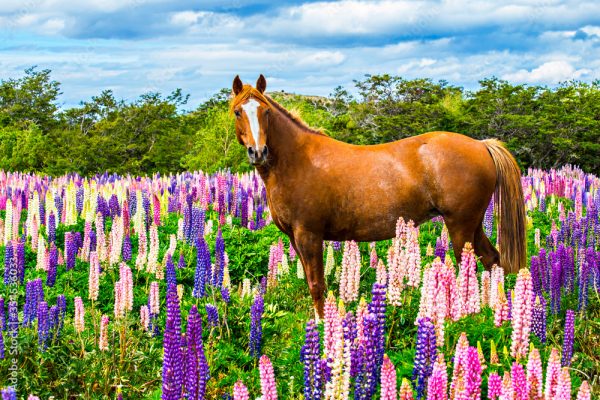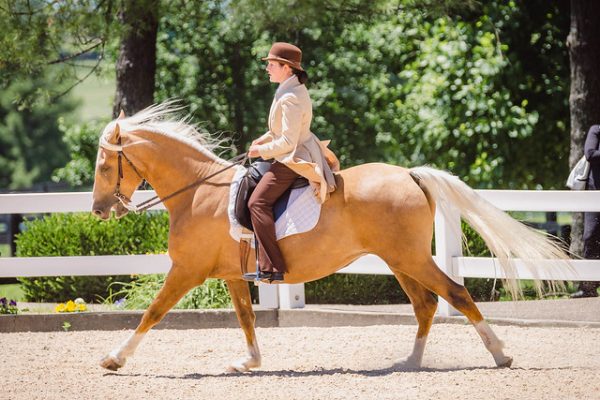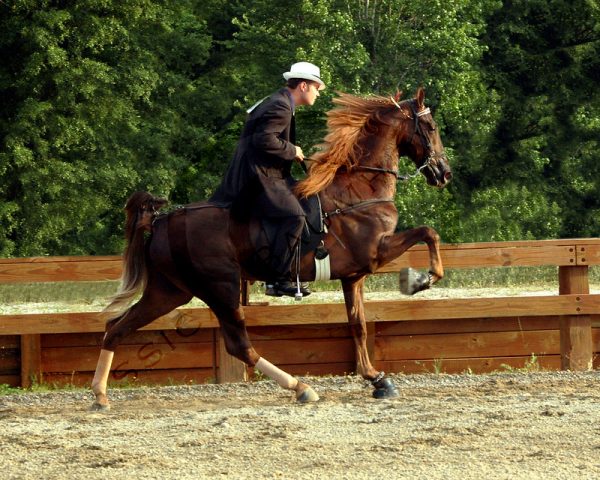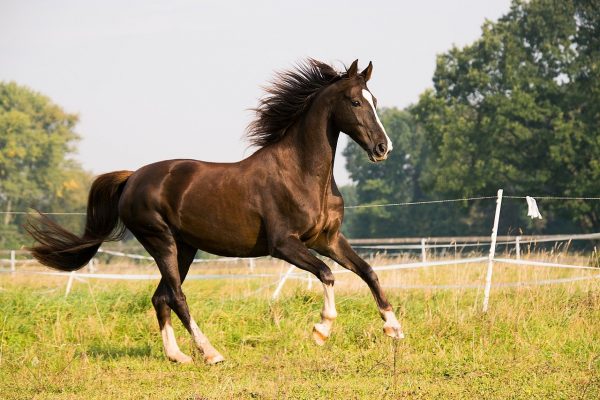Horse Breeds:- Riding horses Western or English style involves horse safety issues, equipment, and riding etiquette; students of all body build and athletic ability can be successful riders.
Many breeders breed their horses for specific results albeit a smooth gait, head carriage, sure footedness, or stamina. In pleasure riding, livestock handling, racing, hunter-jumper, or militia, horses have been transports for man dating back to 30,000 B.C. as depicted in hieroglyphics, and remain a sport, conveyor, and companion.
Read About
Top 50 Horse Breeds
Horse Breeds | From (A to B)
Akhal-Teke

The Akhal-Teke comes from the modern country of Turkmenistan. This breed has been known for about 3,000 years as excellent racehorses and cavalry mounts.
The Akhal-Teke has superb stamina. Much of this is attributed to their diet, which is low in bulk, high in protein, and often includes eggs and butter with barley.
Today, this breed is used mostly for dressage, show jumping, and everyday purposes.
After Real Or Lusitanos

The Alter Real horse was developed at Vila de Portel Stud in Portugal in the 18th century.
300 Andalucian mares were used in creating this horse that was known for its Haute-Ecole skills of that era.
This is a high-spirited horse that might not be a good choice for an inexperienced rider. Overall, this breed is easily trained and has an obedient nature.
American Mustang

The American Mustang can be any type of wild horse. The term Mustang comes from the Spanish word “mesteno,” which means “stray or ownerless” horse. An American Mustang is any wild horse in the United States.
Today, there are about 41,000 Mustangs that wander freely on public land after Congress passed the Wild Free-Roaming Horse and Burro Act in 1971.
Mustangs are described as “living symbols of the historic and pioneer spirit of the West.”
American Quarter Horse

The American Quarter Horse foundation stock originated from Arab, Turk, and Barb breeds. It is the first breed of horse native to the United States.
They were developed from crosses of the horses that were brought to the New World. They quickly became known as the quickest horse on a short, straight run.
Today, this breed is a very popular horse and is used in everything from rodeo to recreation riding.
American Warmblood

The breed of horse is powerful and balanced with good bone and elastic gaits. American Warmblood is one of the best horses for sports activities.
Sport horses of all bloodlines are accepted as long as they can qualify with the qualities and talents to progress through the levels in these traditional sports while remaining sound of mind and body.
Andalusian

The Andalusian ancestors are the Iberian horses of Portugal and Spain. They originated in the Spanish province of Andalusia, hence their name.
Today, the Spanish keep their own studbook and call their horse the Pura Raza Espanola (Pure Spanish Horse.)
This breed competes in many horse competitions and is known as a superb exhibition horse in the United States. It also makes a great family horse because of its love of people.
Appaloosa

The Appaloosa was established as a true breed in the American melting pot. The Nez Perce Indians contributed to the Appaloosa horse of today. They were the only Native Americans to selectively breed their horses.
Appaloosas are normally recognized by their colorful coat patterns, but they also have some unique characteristics. Coat patterns, white sclera, mottled skin, and striped hooves are all characteristics of the Appaloosa.
Australian Stock Horse

The Australian Stock Horse came from crosses between the English Thoroughbred, Spanish stock, and later Arabians, Timor, and Welsh Mountain ponies.
The horses that arrived in Eastern Australia had to be strong and have good stamina just to survive the nine to twelve months sea voyage. This breed was used by the cavalry in numerous wars.
Azteca

The Azteca was developed in Mexico and is the National Horse of the country. Crosses between the American Quarter Horse and the Andalusian began in 1972.
Additional crosses were made using Andalusian stallions and Criollo mares. This breed makes very versatile horses that enjoy challenges.
They excel at activities that require intelligence, spirit, agility, power, strength, elegance, and style.
Balearic

This breed originated on the island of Majorca in Spain. Little is known about this ancient horse and its origin. Its main use is as a riding pony; they stand about 14.4 hands high.
Some reports state that this breed has slender legs, a thick, short neck, and a Roman nose.
Belgian Warmblood

The Belgian Warmblood was developed using Thoroughbreds, Anglo-Arabs, and other proven European Warmbloods (Hanoverian, Holsteiner, Selle-Francais, and Dutch.)
These horses were bred to Belgian’s best cavalry and light agricultural horses to create the Belgian Warmblood.
This breed has gained recognition in show jumping and eventing and dressage. Once kept as Europe’s little secret, today the Belgian Warmblood is sought out all over the world.
Buckskin

The Buckskin is a color breed and has a coat that comes in shades of tan. It can be very light (cream) to very dark (bronze.) Mane, tail, ear frames, and legs are dark brown or black.
The Buckskin has been known not only for its beautiful coloring, but also for endurance, stamina, versatility, and temperament.
Horse Breeds | From (C to H)
Canadian Horse

The Canadian Horse descended from the horses originally sent to the New World in the late 1600s by King Louis XIV of France.
Arabian, Barb, and Andalusian blood all contributed to the Canadian Horse. This breed is still known as the hardiest, strongest, and most acclimatized in Canada today. This reputation earned them the nickname “Little Iron Horse.”
Chilean Corralero

The Chilean Corralero’s origins are in the Spanish Horse. A pure Chilean horse originated at the beginning of the 19th century and the Chilean Corralero appeared by the end of the 19th century.
The primary use for the Chilean Corralero was working cattle initially. Today is in use in the Chilean rodeo.
Cleveland Bay

The Cleveland Bay is the oldest of the indigenous breed of English horses. They originated in Britain, in the Cleveland area of Northern Yorkshire.
This breed is thought to have evolved in the 17th century from crossing native bay-colored mares with Oriental stallions. They are a versatile breed that has been used for agricultural work, hunting, and as a packhorse.
Dutch Warmblood

The Dutch Warmblood is a modern horse that originated from the selective breeding of German, French, and English horses crossed with the native Dutch stock.
These Dutch Warmbloods are often bred to perform in show jumping and dressage competitions at the highest level. This breed has great intelligence, consistency, and enthusiasm for work.
Florida Cracker

The Florida Cracker horse traces its ancestry to Spanish stocks brought to the Americas at the beginning of the 1500s.
The Indians first and later the Pioneers began to use the Spanish Horses. This breed was hardy and well adapted to the Florida climate and environment and excelled as working cattle.
The name “cracker” came from the loud cracking noise the whips made when cattle were being rounded up.
Hanoverian

About 400 years ago in the former Kingdom of Hanover, today it is Lower Saxony, in northern Germany, a flourishing horse-breeding industry existed.
The Hanoverian horse was developed there and since that time has been dispersed to all five continents.
Today, it is one of the most prominent breeds of riding horses in the world. These horses are known for natural balance and floating trot.
Holsteiner

The Holsteiner horse is the product of systematic breeding from over 700 years ago in the Schleswig-Holstein region of Northern Germany.
The monasteries of the region conducted early breeding of this breed, with a special emphasis on producing a graceful riding and carriage horse that could also work the fields in the severe climate of the area.
Today, they are used as sport horses and have a reputation of being one of the best.
Horse Breeds | From (I to L)
Irish Cob

Irish Cobs originated in the British Isles, Ireland, and they were most popular among nomadic gypsy folk.
These horses occur in Piebald (white and black) and Skewbald (white and brown) color patterns, and they have luxuriant tails and manes.
Besides, Irish Cobs have substantial hooves and coated/feathered lower legs, which emphasize the animal’s overall charm.
Although Irish Cobs are heavy-boned, they move with remarkable lightness, resulting from a combined action of forelegs and shoulders.
Irish Draught

The Irish farmer needed a horse that could work the land but would also pull the dogcart to church at a quick trot and take the farmer fox hunting.
The hunting farmer wanted a horse that would go all day and jump anything he confronted.
The Irish Draught has benefited from this environment for longer than any other type of horse and over time has developed into Ireland’s unique contribution to the equine world.
Knabstrup

The Knabstrup is a Danish breed that is based on a gray-spotted Spanish mare called Flaebehoppen that was left in Denmark by Spanish troops during the Napoleonic Wars.
Today, this breed has lost the number of spots on its body but has improved confirmation and quality.
These horses have been used for riding and appearing in the circus, and more recently they have started to make appearances in the competitive sports and show arena.
Lipizzan

The Lipizzan was developed in Slovenia at the Lipica (Lipizza) stud farm using the finest imported horses: Andalusians, Barbs, and Berbers bred to the local Karst horses.
Four hundred years of selective breeding have made the Lipizzan one of Europe’s oldest breeds of horse.
This is a royal horse that was bred to perform Haute Ecole dressage at the Spanish Riding School and owes its survival to the intervention of U.S. General George S.Patton during World War II.
Horse Breeds | From (M to O)
Mangalarga

The Mangalarga is the National Horse of Brazil and is the product of the rich agricultural area and its haciendas.
The excellent disposition of the Mangalarga Marchador, as well as its tameness and intelligence, makes it an easy animal to train.
The hardiness of this breed can easily be noted as one observes its great ability to adapt to any type of unfavorable terrain or climate, be it tropical, temperate, or cold.
Missouri Fox Trotter

The Missouri Fox Trotter was developed in the rough Ozark Mountains during the nineteenth century by settlers who needed smooth-riding, sturdy mounts that could travel at an easy, surefooted gait for extended distances.
Today, this breed is popular for long-distance trail riding and field trial competitions. This breed has a national headquarters and Hall of Fame that is located on 71-acres outside of Ava, Missouri.
Morab

Morabs are the progeny of Morgan and Arabian breeding. They are neither half-Morgans nor half-Arabians, but rather a very distinct breed.
The distinguishing factor that makes the Morab a separate breed is the fact that these horses are able to transmit distinguishing characteristics to their progeny. This breed is known as “The Versatile Breed” and often excels at any discipline.
Morgan

The Morgan is an American breed that was founded by Justin Morgan in 1789. The Morgan horse population quickly began to spread out and they were in high demand. They were used for light agricultural work, as buggy horses, and to pull stagecoaches.
Morgan stallions were used in the Remount program of the army to produce quality cavalry horses. Reliable, loyal, tireless, and versatile, the Morgan has become a horse for people of all ages.
Mountain Pleasure

The Mountain Pleasure horse was developed in Kentucky as a versatile, sure-footed, easy-keeping animal and was sometimes referred to as the “Kentucky Saddler.”
This breed is a gaited horse, meaning that it naturally has gaits other than the walk, trot, and canter of all horses.
Mountain Pleasure horses are valued for their calm disposition, and the breed is best matched as a family pleasure horse rather than a high-powered show horse.
National Show Horse

A National Show Horse is a combination of the Arabian and the American Saddlebred horse.
This breed is respected for its endurance, agility, beauty, elegance, and show ring appeal.
The National Show Horse is primarily used for pleasure riding and showing. The National Show Horse Registry was started in 1982 and has specific rules regarding the types of horses that may be used to produce National Show Horses.
Norwegian Fjord

The Norwegian Fjord is one of the world’s oldest breeds of horse, and excavations have shown, that it was popular among Viking tribesmen.
It is probably related to the Przewalski, the Asian primitive horse. Norwegian Fiords stand 13-15 hands tall, and they are mostly dun in color, and have distinctive dark strips, running down the middle of the mane.
These horses are friendly and eager to work, and they are used for driving and riding.
Oldenburg

The Oldenburg horse is bred in the north of Germany, the former kingdom of Oldenburg. These horses are bred for dressage and racing.
Oldenburgs have a refined and graceful body, and their overall grace is accentuated by light and effortless movements of the body.
Oldenburgs have long legs and strong backs, and the withers are long and fitting, which defines the position of saddle and rider. Hindquarters are well-developed, and they provide substantial propelling power.
Orlov Trotter

The Orlov Trotter was developed in Russia in the 18th century, by Count Alexis Orlov. The horse stands 15-17 hands tall, and the colors are usually grey and black.
These horses feature a small head, elongated neck, and distinctively powerful hindquarters. The body is well-muscled, and the ribcage is well-sprung.
Orlov Trotters are used in riding, driving, and dressage. These horses are traditionally presented in traditional troika races.
Horse Breeds | From (P to R)
Paint Horse

After the introduction by the Spanish, Paint horses joined the numerous herds of wild horses, which roamed the plains of western America.
They feature specific coat colors, which usually combine white and black. Color patterns are divided into three categories: tobiano, over, and tovero.
Color combinations may also include palomino, bay, brown, sorrel, dun, grulla, grey and roan.
Paint horses are square-built, strong-boned, and balanced, and they are used both as draft- and sport-horses.
Palomino

Actually, Palomino is not a breed, but a horse color. The exact place of origin of the horse is uncertain, but many believe that these animals descended from Arab breeds.
The palomino color is that of a 14-karat gold coin, and it can be either dark or light. In fact, the palomino color is defined by a dilution gene. Palominos stand 13-17 hands tall, and they have distinctive white manes.
Paso Fino

The Paso Fino breed first came to be a mixture of Spanish breeds, such as Barbs, Andalusian, and Spanish Jennet.
This horse possessed a very light and comfortable gait, characterized by a rhythmic and even hoofbeat, which contributed to the popularity of Paso Fino Horses.
They have a proportionate body and intelligent facial expressions. Paso Fino Horses stand 13 to 15 hands tall; all equine colors are admissible.
Peruvian Paso

Peruvian Paso Horses descended from Barbs, Spanish Jennets, Andalusians, and Friesians. These horses greatly contributed to the overthrow of the old Inca Empire.
These horses occur in all equine colors, including gray, brown, bay, chestnut, palomino, black, buckskin, and roan.
Peruvian Horses move in a side-to-side swaying gate, and they can extend their front limbs in a distinctive “swimming” fashion. They are very enduring and always eager to please their handlers.
Pinto

The Pinto horse is a cross between a Spanish horse and the Mustang. These horses feature distinctive patchy color patterns, which, according to the proportion of white and dark, are divided into the Tobiano and the Overo patterns.
Pinto Horses are very intelligent, easy-going, and manageable, and they are well suited for any type of work. They are good in the show ring, and they can adapt to various environments.
Racking Horse

Racking horse is but the most beautiful and versatile breed. First, it is renowned for its specific gait, characterized by a peculiar walk, when only one hoof touches the ground at equal intervals.
The foundation of the Racking Horse Breeder’s Association in 1971 perpetuated this intelligent, laborious, and energetic horse. The beautiful qualities of this horse won the hearts of dwellers of southern plantations back in pre-war times.
Rocky Mountain Horse

Rocky Mountain Horses appeared in eastern Kentucky, and they attracted local farmers by their gentle disposition and ambling gait.
These horses step on each foot separately, producing an even and rhythmic beat. This walk occurs naturally and is never a result of training.
Rocky Mountain Horses are well accustomed to severe climatic conditions, and they can withstand cold better than other horses. All Rocky Mountain Horses must be solid-colored.
Horse Breeds | From (S to W)
Saddlebred

Saddlebreds can be traced back to the Narraganset Pacer, who had been produced from Galloway and Hobbie horses.
These horses arrived on the American continent in the 1600s. Later, Narraganset Pacers were crossbred with Thoroughbreds, which gave Saddlebreds the start in life.
These horses stand 15-17 hands high, and they do well in dressage, carriage, jumping, and endurance competitions. They can walk in various manners, and they are people-oriented.
Spanish Mustang

These horses arrived in America from Spain, many of which escaped and became feral. The breed was on the brink of extinction in the first half of the 1900s, but Robert E. Brislawn founded the Spanish Mustang Registry in 1957.
These horses average 14.2 hands high; they are well muscled. Colors are not limited. Spanish Mustangs are proud and independent, but they do respond to kind treatment with love and devotion.
Spotted Saddle Horse

The Spotted Saddle Horse combines many features of Mustangs, Standardbreds, and the Tennessee Walking Horse.
The horse features white markings above the hocks and in other parts of the body, and it stands 14.3 to 16 hands tall.
Spotted Saddle Horses can perform various gaits, including racking, cantering, single footing, and fox-trotting. Their smooth gait and easy temperament have earned them perfect for riders.
Standardbred

Standardbreds are relatively a new breed; it has been around for only 200 years. It is an offspring of the English Thoroughbred and possesses many of his traits.
The Standardbred is smaller than its father, and it stands 15.2 hands tall at an average. Colors are varied, with bay, brown, and black being the most common ones.
Pacing Standardbreds move one-side legs in unison, and trotters have a diagonal gait.
Tennessee Walking Horse

The Tennessee Walking Horse was created by mixing the genes of the Narragansett Pacer, Canadian, Morgan, Standardbred, Thoroughbred, and American Saddlebred.
These horses stand 14.3 to 17 hands tall, and their body features a long bottom line. They have elegant heads and small ears.
Tennessee Walking Horses come in a diversity of color patterns, and they perform three gaits: cantering, the flat foot walk, and the running walk.
Thoroughbred

It took about 300 years for specialists and enthusiasts to breed Thoroughbreds, and this process is still underway.
They have a very rich Arabian ancestry and have contributed their genes to many famous breeds of horses.
The Thoroughbred stands 16 hands high, and its body is muscled and gracious. Thoroughbreds occur in the bay, dark bay, chestnut, black or gray. White markings on the muzzle and legs are permissible.
Trakehner

The Trakehner Horse goes back as far as 400 years ago, so it is an old warmblood breed. He is an offspring of the Schwanke, which originated in East Prussia, Germany.
Crossbreeding the Schwaike with the Arab and the English Thoroughbred produced this breed.
This horse was very powerful, obedient, and agile, and it was used as a cavalry horse. It also proved an excellent farm horse.
Welsh Cob

The Welsh Cob originated in Wales, in the west of Great Britain, and existed there around the year 1600 B.C.
These horses were used in wartime for driving forces in the required direction and for carrying loads. The Welsh Cob is a strong, agile, and obedient pony.
Its height may exceed 13 hands. Welsh Cobs do well in all competitions and are wonderful companions for families.